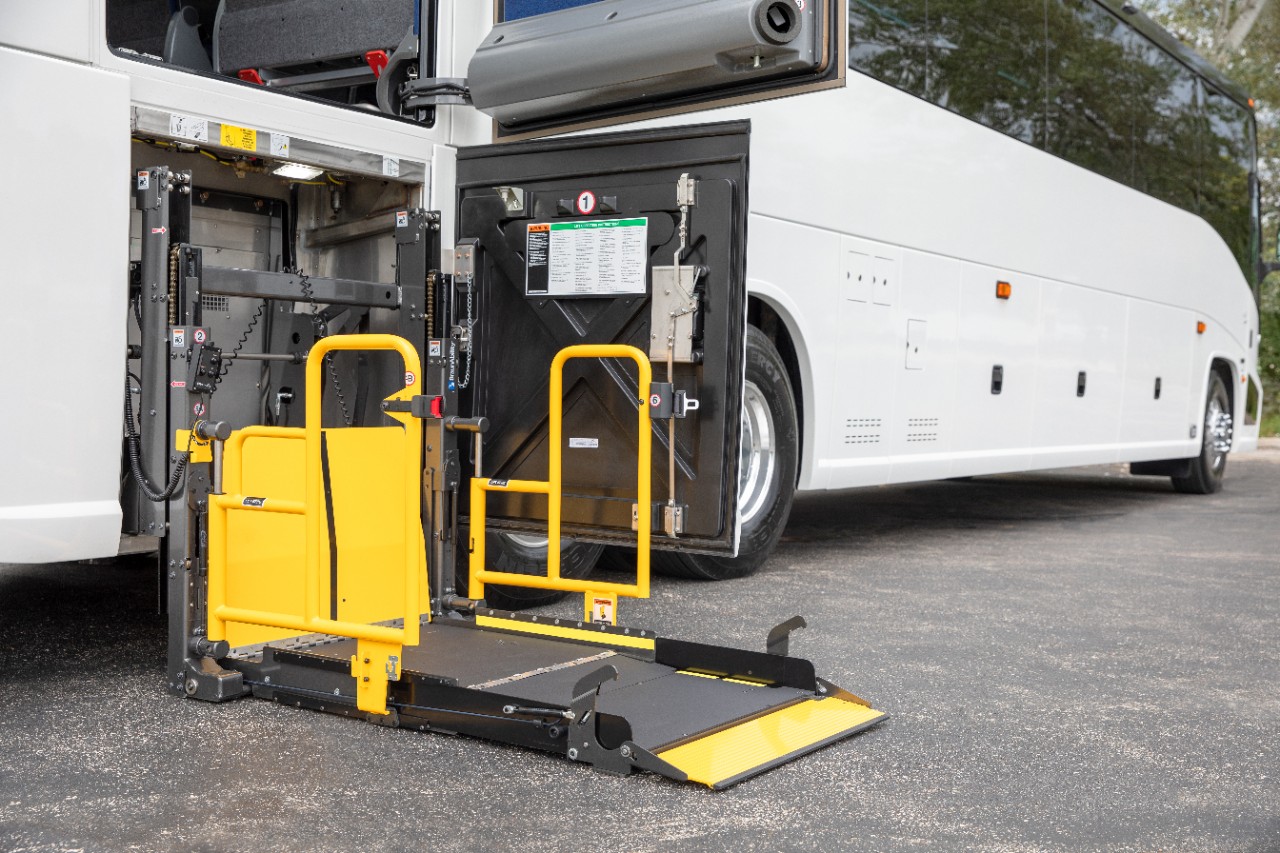BraunAbility Motor Coach Market

As the market leader in accessible transportation solutions, motor coach manufacturers approached BraunAbility in 2008 to partner on motorcoach wheelchair accessibility. Leveraging decades of mobility solutions, BraunAbility, including founder Ralph Braun, went to work in collaboration with several of the largest motor coach manufacturers.
In this transportation segment, BraunAbility designs application-specific wheelchair lifts due to the unique installation within each bus manufacturer and motor coach model. A highly specialized engineering blend of known technology and design (including the development of new lifting philosophies) were required to exceed the lofty expectations of customers and passengers. Today, BraunAbility motor coach wheelchair lift products are proven, trusted, and validated throughout North America
The motorcoach Market is divided into two customer market segments;
- Private Sector - which refers to specialized charter groups, tours, line haul, and fixed routes shuttles for end customers
- Public Sector - which refers to urban/suburban cities, counties, and transportation districts. This segment includes; commuter/transit, educational institutes, federal and state prison transportation.
The private sector primarily uses BraunAbility motor coach wheelchair lifts which are stowed in a compartment between the rear axle and the rear bumper. Each motor coach bus model is evaluated to determine what specific wheelchair lift will be used in each application. This mounting location preserves the valuable space for all types of luggage in the compartments. This lift model (NL500 Series) is semi-automatic and requires the driver to manually operate several functions of the wheelchair lift operation to complete the passenger load and unload cycle.
In the public sector, the fixed route motor coach operators offer intercity transportation for regular hours and days. These operators normally see the highest demand for accessibility service due to the long service route hours.
The motor coach service for customers needing accessibility is monitored, with fines levied to operators (in the worst cases) of non-working equipment. This mandate has led to improved, proper wheelchair lift operation, and recommended service maintenance.
Alternately, some motor coaches within the public sector will use a cassette-style wheelchair lift. This wheelchair lift is mounted in the center of the bus, within the center luggage compartment. Aside of raising the handrails manually, this cassette passenger lift is fully automatic. Because the public sector is publicly funded, the wheelchair lift must meet “Buy America” materials and labor content requirements. This federal standard requires a high percentage of the material content and labor originates within the USA.
BraunAbility designed both wheelchair lift models to include detailed, diagnostic ‘Help’ LED indicator lights which support a service technician when troubleshooting issues.
The COVID-19 pandemic has negatively impacted both the private and public sectors of the motor coach industry. The private sector has been hit the hardest. Suffering record low volumes due to its direct relation to tourism and leisure travel Social distancing guidelines also impact public and private ridership. Senators Jack Reed and Susan Collins introduced the CERTS Act in July, to provide economic relief to the nation’s struggling motor coach companies and passenger vessel operators. The Act passed the Senate on October 1st, 2020, and would authorize $10 billion in emergency economic relief including grants for bus, motor coach, as well as passenger ferry industries impacted by COVID-19. While the tough stretch for the bus and motor coach industry is not over, the economic relief provides a glimmer of hope for the companies, their employees, and passengers who count on them for reliable transportation.
Related Articles:
- 3 Reasons to Get a Handicap Accessible Van for a Business
- 3 Tips to Choose the Right Handicap Vans
- 3 Tips to Find the Best Accessible Wheelchair Van
- 3 Tips to Find the Right Electric Lift for the Car Owner
- 3 Tips to Make Your Business More Handicap Accessible
- 5 Benefits of Having a Full Size Handicap Van
- 5 Tips on Choosing Wheelchair Lift Support for Vans
- 6 Features to Look for When Buying Handicap Accessible RVs
- 9 Tips on How to Start a Business in Paratransit Services
- Accessible Vehicle: Rear Entry or Side Entry
